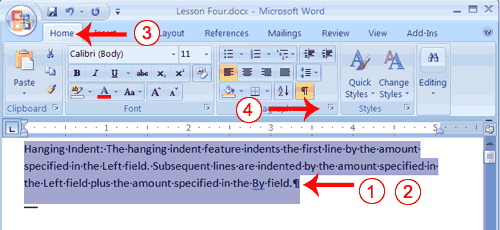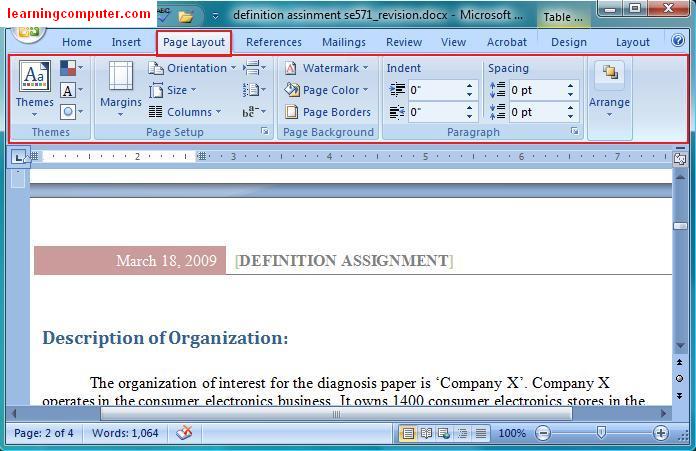

Note: changing the default template does not change styles for previously created documents. Those changes become the default setting for all new documents based on that template until you change them again. When you click the Default button, all settings in the Paragraph dialog box are saved to the Normal.dotm template, which is the default template in Word 2007. Change the paragraph indentation and line spacing settings as desired.On the Home tab in the Paragraph group, click the launcher to open the Paragraph dialog box.To save changes to the default Word 2007 template, follow these steps: Change paragraph formatting for the default template
#SETTING INDENTS IN WORD 2007 HOW TO#
Changing the template does not change already existing documents, so instructions for how to apply the paragraph formatting to all paragraphs in a document you already created are included. You'll also need to go through and perform these same steps on any other styles in the template or document.To make your paragraph formatting changes permanent and available for any file, you need to save the change to the Normal.dotm template.
#SETTING INDENTS IN WORD 2007 UPDATE#
Of course, if you've inadvertently changed styles earlier (because the Automatically Update check box was selected), then you'll need to go back and change the style definition so that text appears as you want it to. That's it that's how you stop Word from applying the explicit changes to the underlying style.

Word displays the Modify Style dialog box. Select the style you want to change, and then click Modify.If the style is stored in a template (it is not defined only for the current document), then I find it a good idea to choose the Add to Template check box.įinally, follow these steps if you are using Word 97 or Word 2000:.Clear the Automatically Update check box.Click the drop-down arrow and choose Modify.A drop-down arrow should appear at the right of the style name. Hover the mouse pointer over the style you want to change.Word displays the Styles and Formatting task pane. Choose Styles and Formatting from the Format menu.You do that by following these steps if you are using Word 2002 or Word 2003: How to solve the problem? Turn off the setting in Word that causes explicit formatting to be absorbed into the underlying styles. All of a sudden, local formats can be propagated globally, and that results in what appears to be strange behavior on the part of Word. This behavior (of absorbing explicit formatting into the underlying style) really muddies the water for people just learning how Word handles formatting. When this occurs, any other document elements that used that style automatically change to reflect the newly applied format. This happens because Word can "absorb" explicit formatting changes into the underlying style. Word also makes it possible for explicit formatting to not just override the implicit formatting, but to become the implicit format. You can't remove it you can only override it. For instance, if you select a few words in a paragraph and then click the Bold tool, the selected text is formatted as bold, but you haven't removed the style that controlled how the text was originally formatted. If you try to ignore styles, then most, if not all, of your paragraphs use the Normal style.Īny explicit formatting you do is always done as an overlay to the underlying style-based formatting. If you create new styles, you are creating new "default" formatting that can be applied to various elements of your document.

If you change what is within the definition of a style, then you've changed the formatting applied across all paragraphs or characters that use that style. You can't get away from them they are always there, even if you try to ignore them. Explicit formatting is done through the use of formatting commands, such as those found on the toolbars, in the menus, and in various dialog boxes.Īll default formatting in Word begins with styles. Implicit formatting, which is formatting done by "default," is implemented through the use of styles.

In general, there are two types of formatting in Word: implicit and explicit. Every time she highlights a section of text and then changes the font or margin alignment, Word changes the whole document into that new font or margin.īefore explaining how to fix this, it is necessary to do a bit of a review about how formatting is handled in Word. Emily has a concern about how she keeps losing document formatting.


 0 kommentar(er)
0 kommentar(er)
